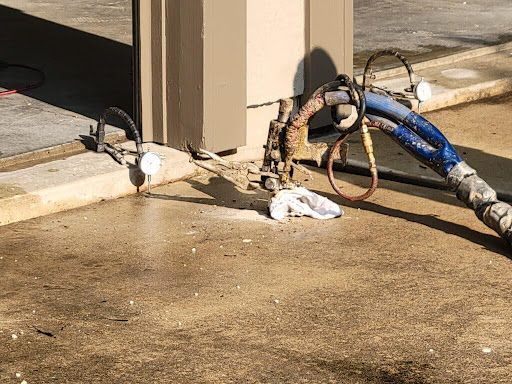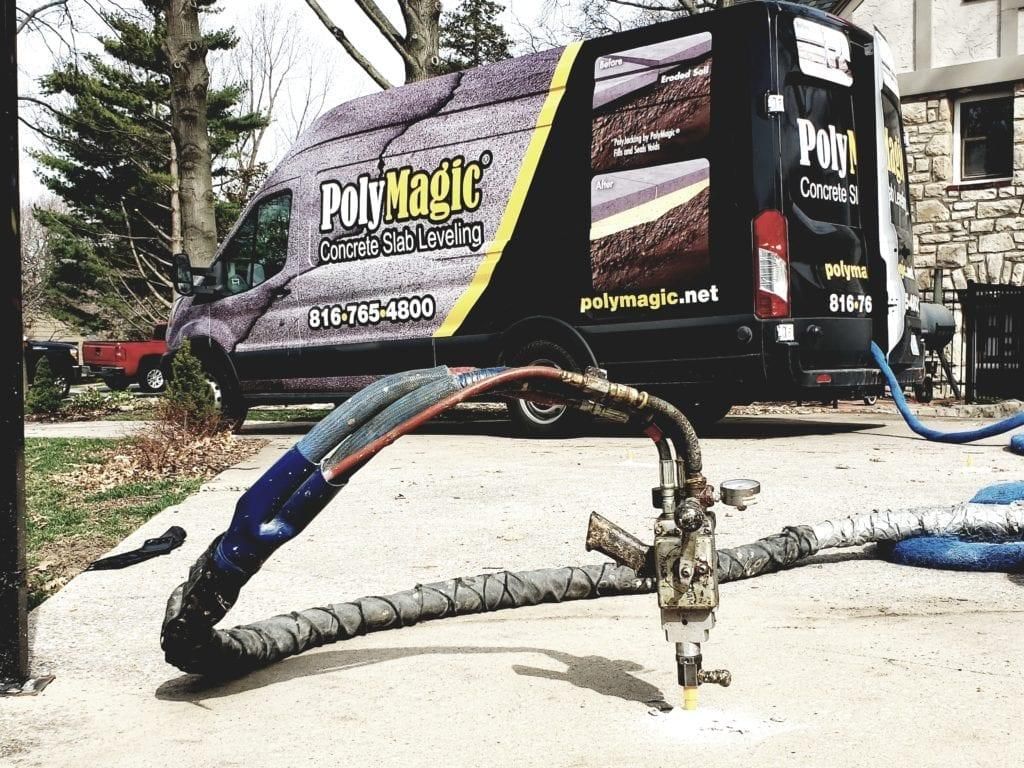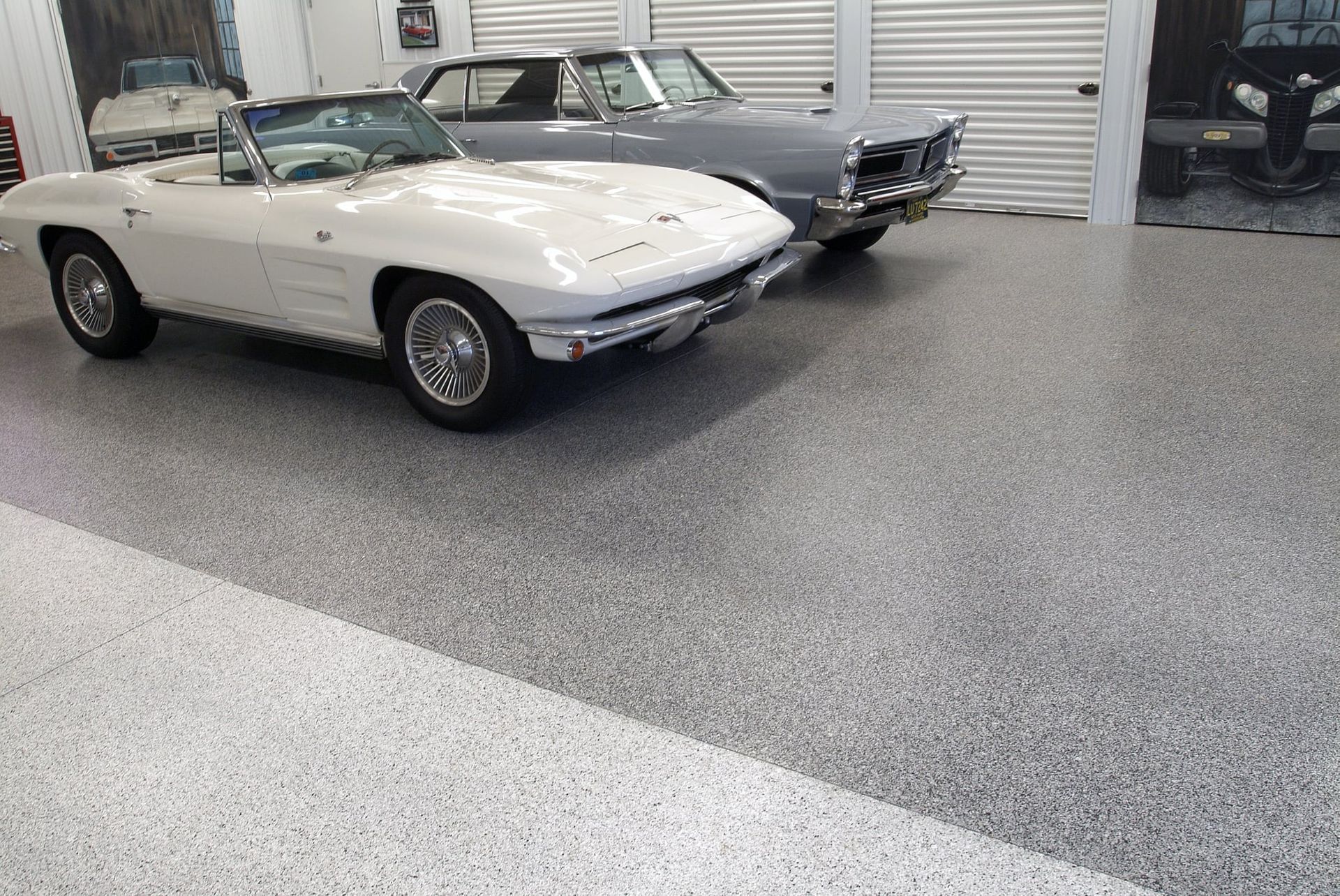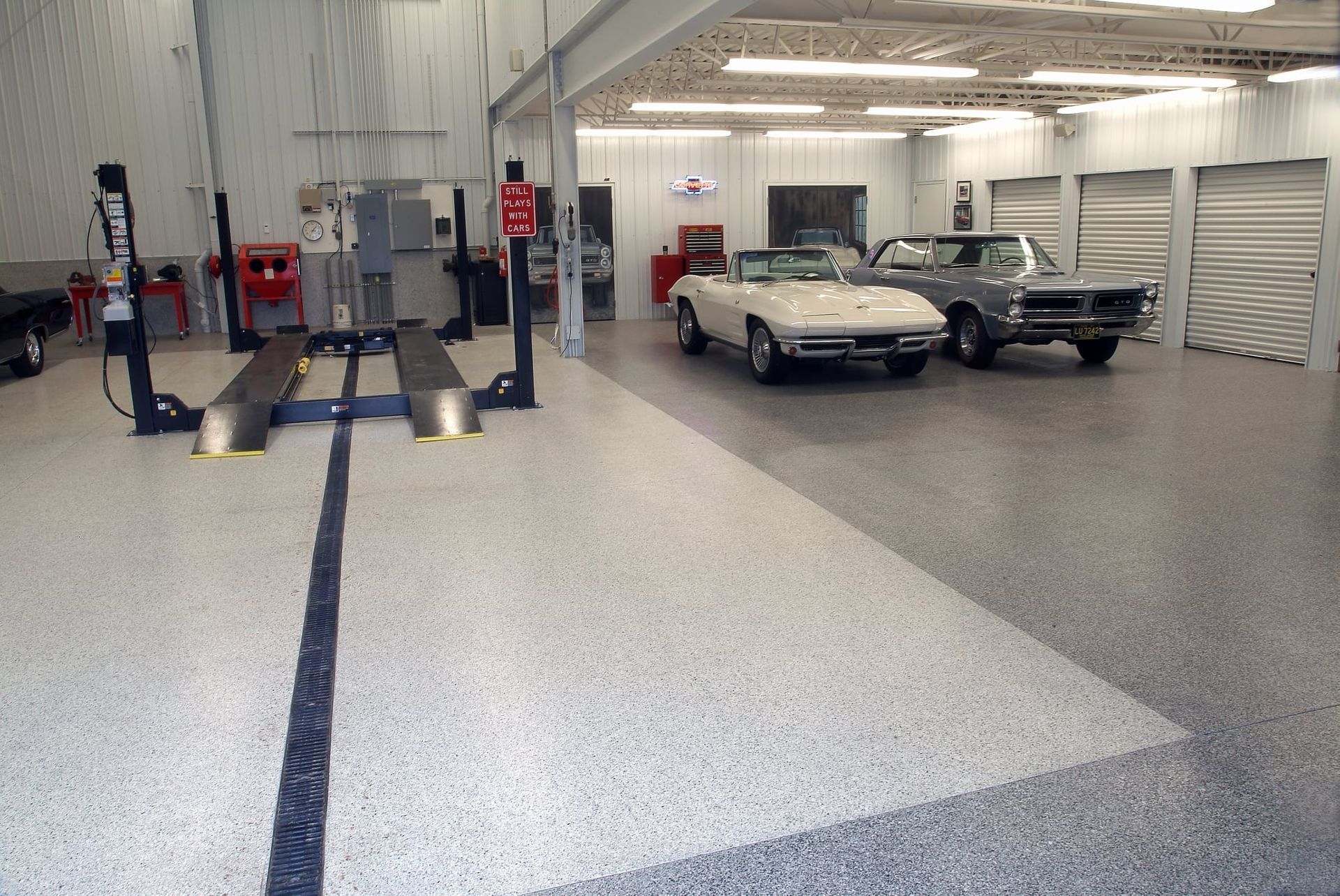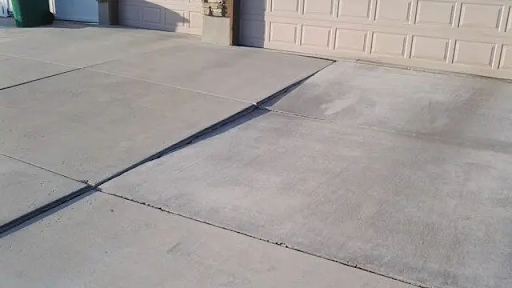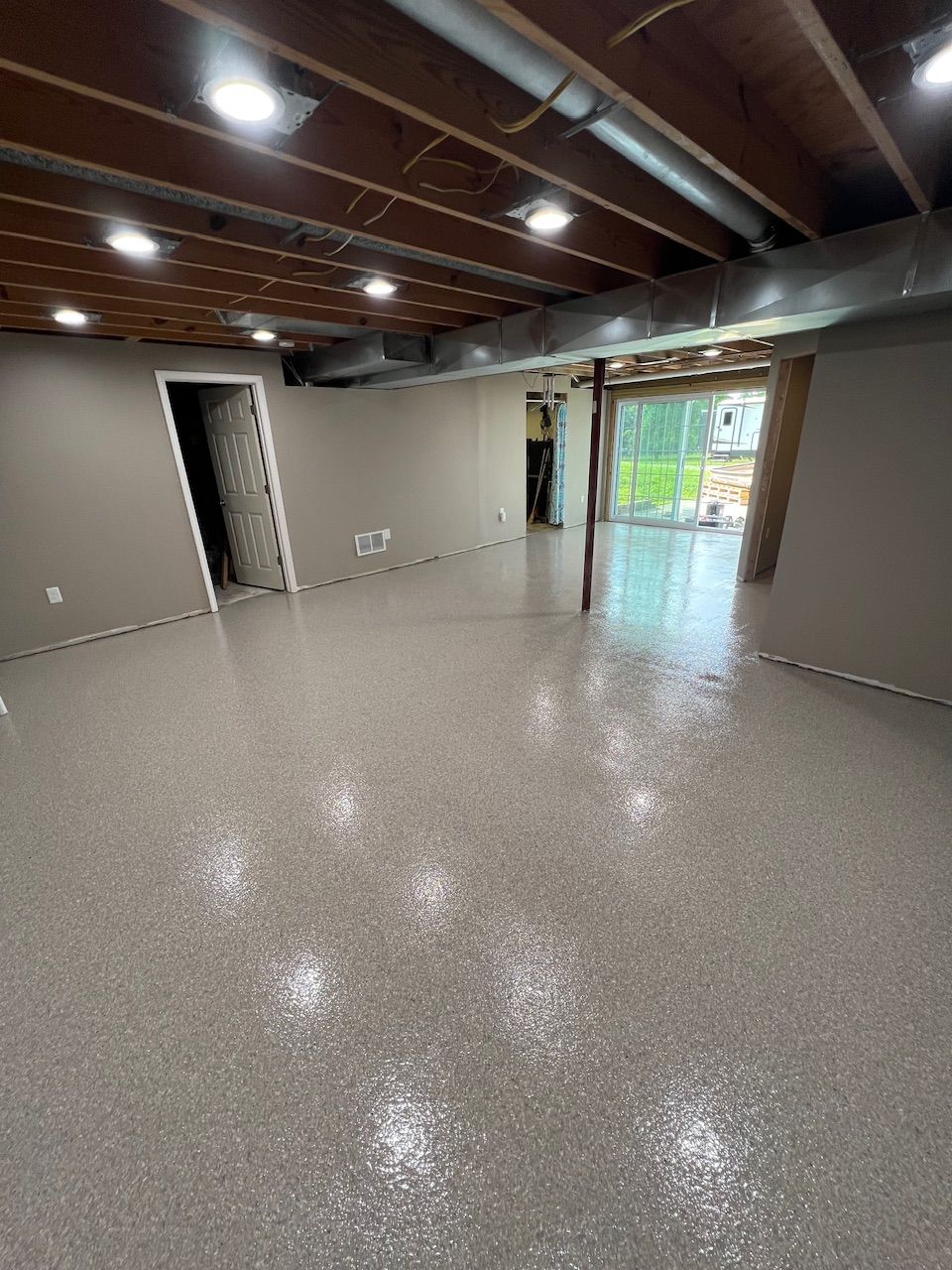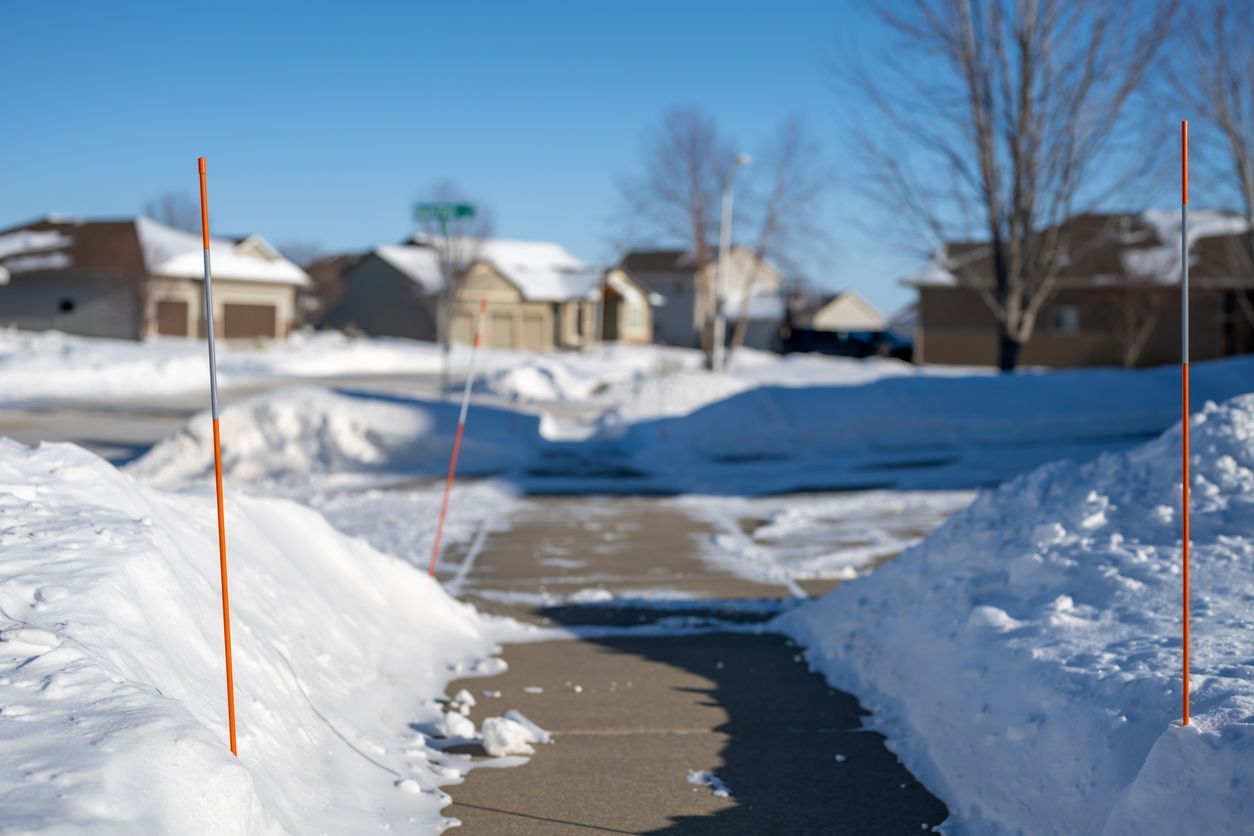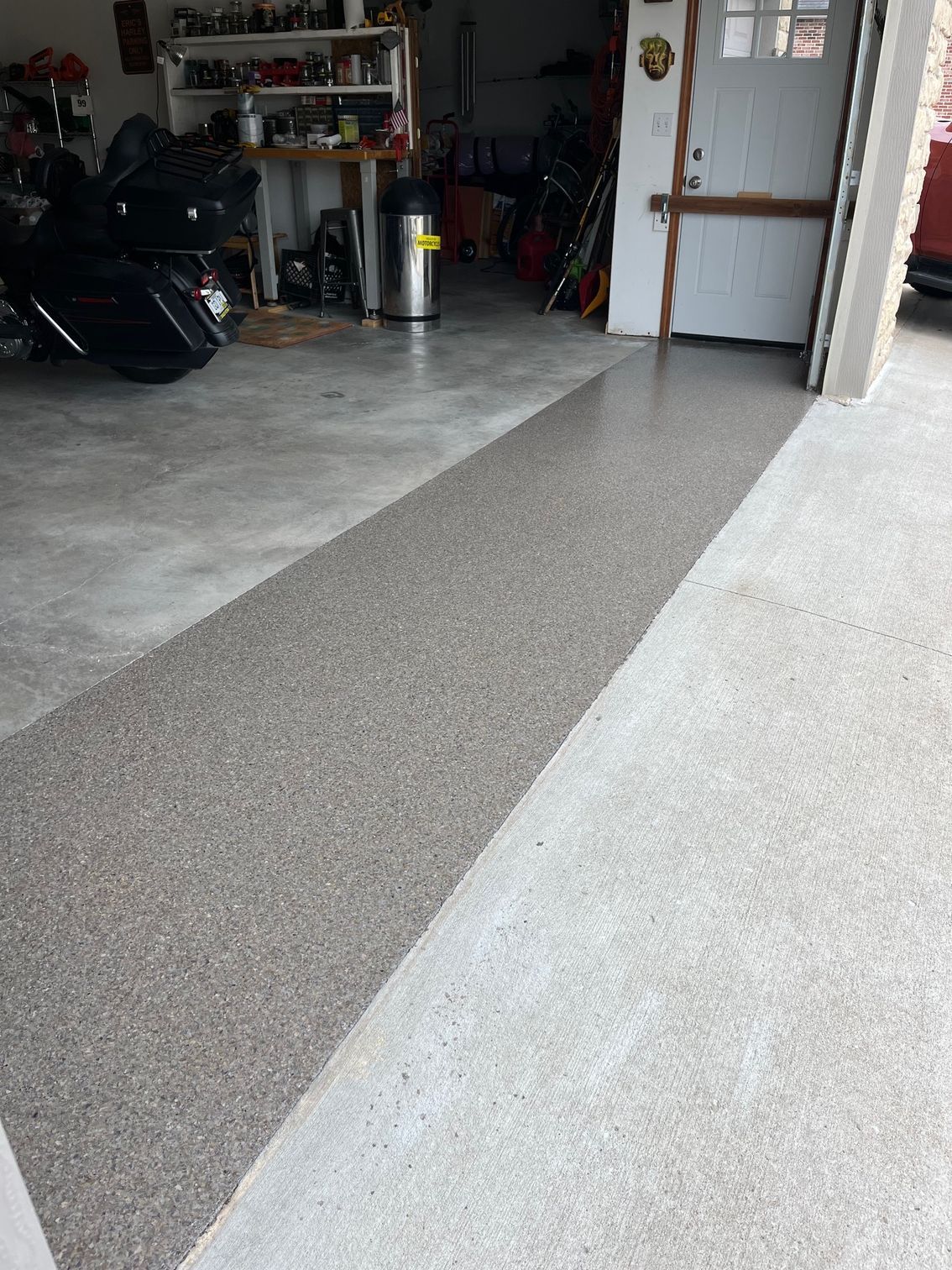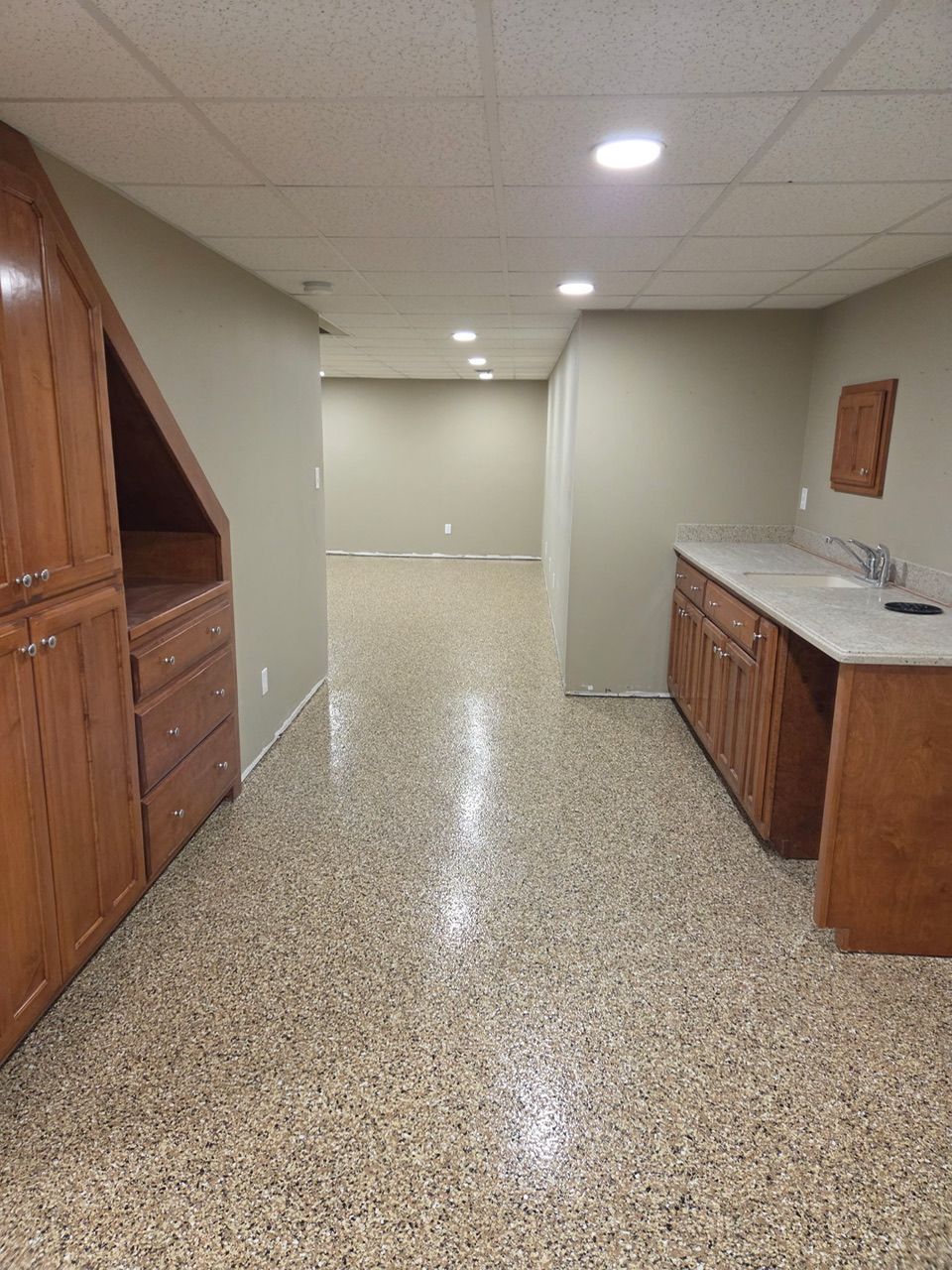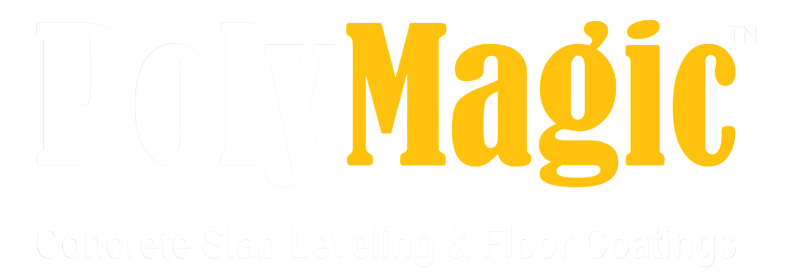3 REASONS TO REPAIR YOUR GARAGE CONCRETE THIS WINTER IN KANSAS CITY METRO & MID-MISSOURI
With the temperature drop, the ice and snow particularly affect the concrete surface, especially in areas like Kansas City, where freeze and thaw cycles can reduce the concrete’s lifespan by up to 30%. The most susceptible areas are your garage, driveway, sidewalks, patios, and porches. The issues can worsen quicker if there are cracks and potholes on the concrete or uneven surfaces. With the cracks and potholes, water seeps in, freezes and thaws (expands and contrasts), and leads to more damage.
But there’s good news! With the early repair of your concrete in the winter, you can easily prevent further damage. It protects your garage foundation from harsh weather damage, ensures it lasts longer, and gives you a better-looking garage floor.
Concrete repair and polyjacking specialists like PolyMagic explain why winter is actually an ideal time to restore your garage concrete across Kansas City, Overland Park, Lee’s Summit, Columbia, and Jefferson City.
THE IMPACT OF WINTER ON GARAGE CONCRETE
Winter weather causes significant damage to your garage concrete, especially when the temperature fluctuates above and below freezing. This cycle, especially known as freeze-thaw, can significantly lead to water in the concrete. As a result, it expands with the water freezing and contracts as it thaws. Over time, this repeated stress can cause cracks, spalling, and pitting.
Typically, the concrete is porous. It can absorb water very easily, which makes it vulnerable during winter’s freeze-thaw cycles. As the concrete freezes and thaws, the exposed pores in the concrete infiltrate water and cause small hairline cracks. With multiple freeze-thaw cycles, the cracks become large and cause more damage. It is more vulnerable to Kansas City, Overland Park, Lee’s Summit, and Columbia/Jefferson City areas, which experiences almost 79 freeze-thaw cycles each year on average. Sometimes, it leads to concrete movement or heaving due to frozen moisture under the concrete slab.
3 REASONS TO REPAIR YOUR GARAGE CONCRETE THIS WINTER
Harsh weather conditions in the winter can be tough for concrete. So, it is wise to plan for repairs and save the foundation from bigger issues later on. Here are three reasons why repairing your garage floor this winter will be your next worth-it investment:
1. PREVENT FURTHER DETERIORATION
The constantly fluctuating temperature of the winter has a high impact on the concrete slab, which causes several damages. Cracks and potholes tend to worsen during colder months, mainly due to freeze-thaw cycles. Water seeps into these cracks, freezes, and expands, and causes them to grow larger. Repairing your garage concrete as early as possible in the winter is helpful to stop it from further damage and save on costly repairs later.
Besides the freezing and thaw cycle, there is a more common challenge for the concrete in the winter is to deal with the consequences of road salts. Salt or sodium chloride is typically used on roads, driveways, and sidewalks to de-ice. When it comes into contact with the garage concrete from the vehicles during the winter, it leaves a white stain on the concrete.
The sodium chloride reacts with the calcium hydroxide in concrete and creates calcium oxychloride crystals. With the temperature drop, the chemical expands and puts extra stress, which leads to cracks and surface damage. Freezing and thawing of the winter season make the damage worse.
Over time, it affects your garage floor’s durability. So, it is best to repair your damaged concrete in the winter to protect it from spalling and pitting from these harsh chemicals. It’s a wise investment for long-term durability and keeps your garage floor in top condition all winter long.
2. ENSURE SAFETY
Beyond the damage, concrete repair in the winter has a big advantage in enhancing safety measures as well. Cracks or uneven surfaces in the concrete can become dangerous trip hazards. You or your family members could easily trip, especially while carrying heavy items. Broken and rough concrete isn’t just a problem for people.
Sometimes, it affects your vehicle’s tires as well. When the car drives through the damaged concrete in the garage, it can cause unnecessary wear and tear on the tires. The sharp edges of the cracks can cause punctures or cuts into your tires.
Another best part of repairing your garage concrete in winter is ensuring you have the same level of flooring surface quality as you have in other months. You will even get your repair done with minimal downtime. It minimizes the time it takes for the garage to be usable and prevents potential hazards.
3. MAINTAIN STRUCTURAL INTEGRITY
As the months get cold, that is the right time for garage concrete maintenance. You need to ensure proper assessment and maintenance of the garage concrete to maintain its structural integrity.
For instance, repairing damages like cracks, bumps, and settled foundations is a must. This is even most important in winter. A study shows that concrete with untreated cracks can lose up to 40% of its structural integrity within five years due to freeze-thaw action.
Cracks and damage in the concrete can spread over time, which weakens the foundation overall. When water seeps into these cracks and freezes, it causes more damage and leads to costly repairs. A regular inspection as winter comes saves you from this hassle. Plus, a well-maintained garage floor ensures the long-term durability and stability of the foundation.
SIGNS THAT YOUR GARAGE CONCRETE NEEDS REPAIR
There are a number of key signs that indicate it is the right time for concrete repair. It is essential to be familiar with these earlier signs to ensure that the concrete areas remain stable after a manual repair:
- An uneven appearance
- Water is pooling on the concrete structure
- Floors that are sinking
- Sloping floors
- Delaminated or spalled concrete
- Failing expansion joints
- Cracks and potholes on the concrete
- Aging issues
- Discoloration or staining of the surface
- Gaps forming at joints or edges
- Loss of structural integrity
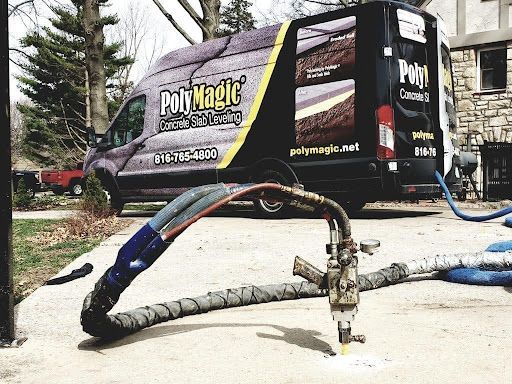
HOW TO FIX YOUR GARAGE CONCRETE IN WINTER?
These are the essential steps for concrete repair in winter to ensure the project is done successfully:
STEP 1: INSPECT THE REPAIR AREA
Before you start, conduct a thorough inspection to identify vulnerabilities that can worsen the repairing process. Check the temperature first.
If it is between 50°F and 70°F, you will be sure of the best curing at the lowest period. However, with the temperature drop at 40°F, concrete faces slower curing times, which even increases the vulnerabilities of the damage
STEP 2: SURFACE CLEANING AND DRYING
After the planning, you need to ensure that the repair site is properly cleaned and free of any debris. Dirt, debris, or moisture can stop the new concrete from sticking properly. Use air blowers or vacuums and remove any loose dirt and particles from the surface. Next, make sure the area is completely dry.
STEP 3: USE THE WINTERIZED MATERIALS AND MIXES
To deal with the slower rates of the dropping temperature, you can use winterized concrete mixes and materials for the repairing process. Ensure the use of materials that can easily withstand the cold weather and harden quickly. After your repair is done, cover the area with heating blankets to maintain the warmth of the area and speed up the curing times.
STEP 4: SEEK PROFESSIONAL CONSULTATION
It will be better to complete the job with a professional to ensure the proper assessment of the repair area. Experts know how to handle winter conditions and can ensure your repairs last long.
For instance, we recommend contacting our concrete professionals at PolyMagic. We have years of experience in this industry and a proven track record of delivering high-quality concrete repairs.
Winter can take a serious toll on your garage concrete. With the right planning for repairing your existing damages and maintenance, you can save your foundation from further costly repairs. You can ensure your concrete is strong enough to withstand the harsh winter conditions.
With winter around the corner, don’t wait for the damage to worsen.
Contact us today to get your garage concrete repaired and protected from the harsh weather conditions.

